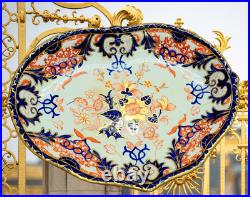

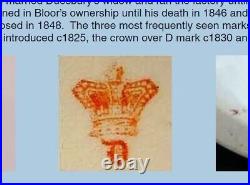

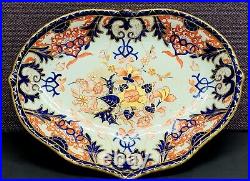
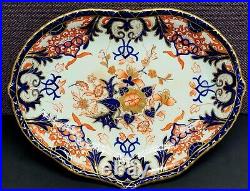
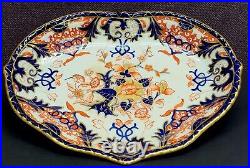
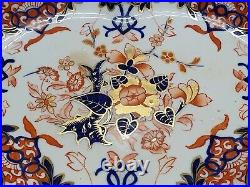
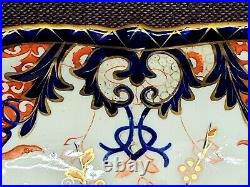
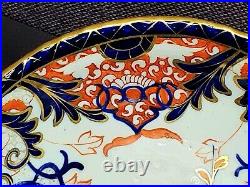
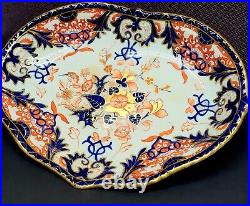
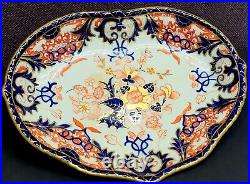
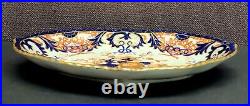
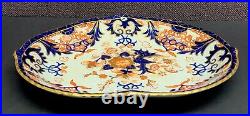

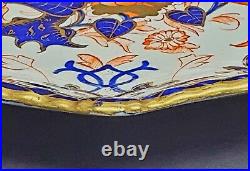

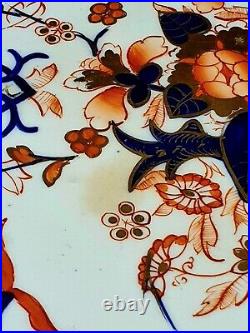
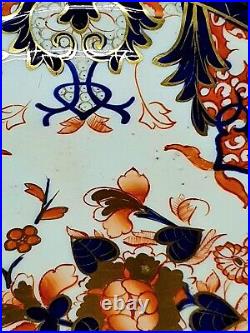
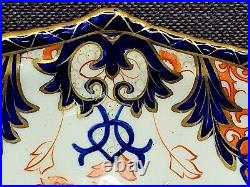


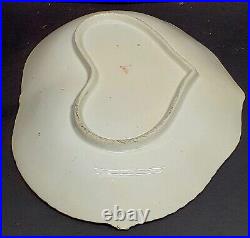

This is a lovely, heart-shaped Imari dish, measuring approx 10.5 in across, or 26.6 cm. It is a very rare piece from c1830s based on its unique crown mark. The dish is in excellent condition with no chips or cracks. There are a couple spots of yellow discoloration in the porcelain on the front face (see photos). The company was known as Derby Porcelain until 1775, when King George III granted the factory the honour of being able to incorporate a crown into its backstamp – becoming Crown Derby. In 1890, Queen Victoria awarded Crown Derby the royal warrant and the company was renamed Royal Crown Derby. Robert Bloor, a former clerk to the Duesburys, took control of the Royal Crown Derby factory in 1811 and began to build a team of fine painters. Bloor Derby is the predecessor to royal crown derby, dating this piece to between 1811 and 1846. The Royal Crown Derby is one of the oldest remaining English porcelain manufacturers. The company has produced tableware and ornamental items since c1750 and is known for its high-quality bone china. The products are known for their elaborate shapes, flamboyant colors, and intricate gilding. Imari patterns are a type of Japanese porcelain that feature intricate floral designs and are characterized by their three dominant colors: blue, dark red, and white. The pattern is often separated into panels and features exotic landscapes, trees and flowers, birds with long wings, and courtesans in kimonos. Imari patterns also commonly include gold, and other colors may appear.
